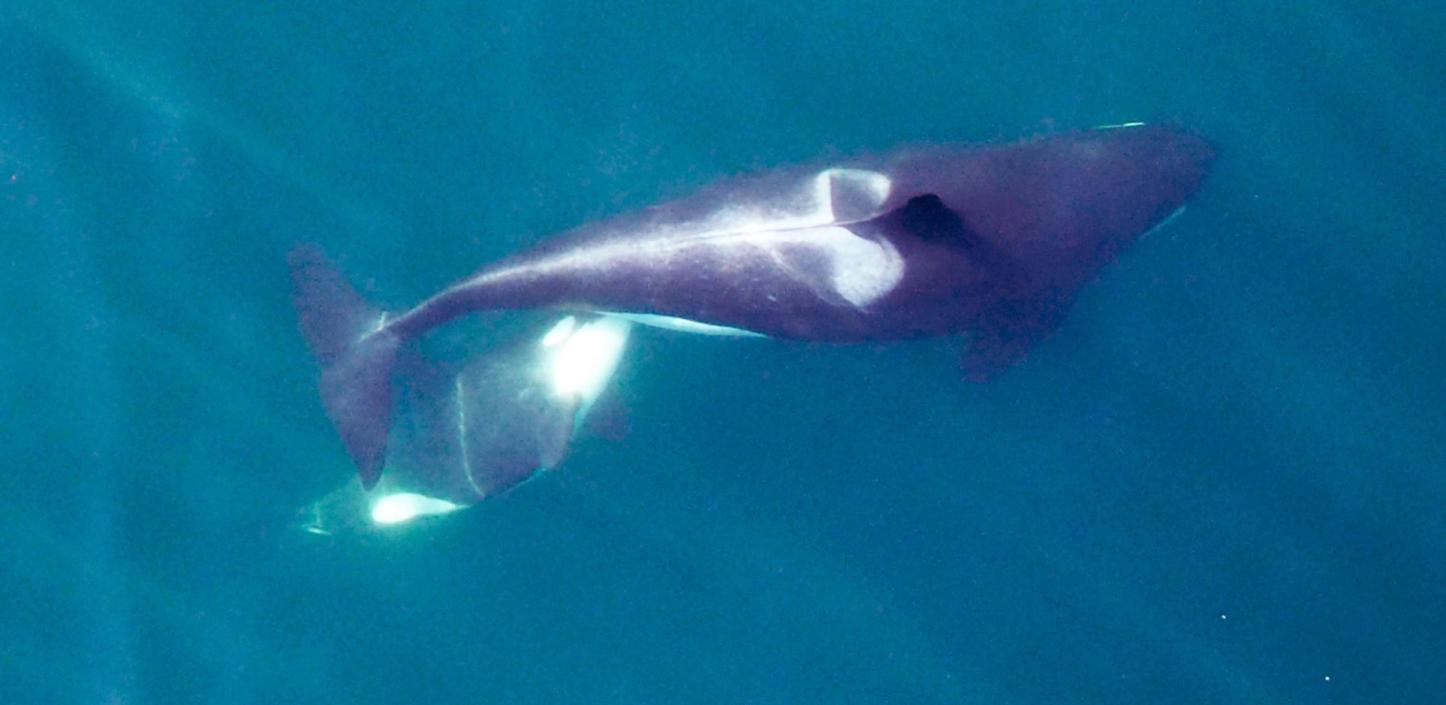
Fighting to Save an Iconic Species
Killer whales carry more toxins in their bodies than almost any other animal on the planet.
These highly efficient hunters sit atop complex marine food webs. Through a lifetime of eating fish with very small amounts of contaminants, killer whales accumulate these dangerous man-made chemicals in their internal organs and blubber.
Scientists call this “biomagnification,” and they have noted a particularly distressing effect on killer whales and other marine mammals: Mothers pass these toxins along to their young during pregnancy and nursing.
Researchers suspect this dynamic might be one factor suppressing the reproductive success of the approximately 80 remaining Southern Resident killer whales inhabiting Washington’s Puget Sound. These highly endangered animals feed primarily on Chinook salmon that, in turn, feed on other organisms that are contaminated by toxins in surrounding waters.
“The low number of observed births in this population is a serious barrier to recovery,” said Dr. Judy St. Leger of SeaWorld Entertainment. “Managers need to better understand the factors driving this lower reproductive success in this population, compared to others. This type of research is critical to identifying the most effective actions we can take in the field to help these whales recover.”
So how, exactly, does one study pregnant or nursing whales? In 2017, NFWF awarded a number of grants through the Killer Whale Research and Conservation Program to support creative, cutting-edge efforts to learn how to do just that.
Researchers from the University of Washington are using detection dogs on boats to locate and collect whale feces, which is scientifically valuable material that can provide insights on pregnancy, nutritional status and toxin loads in the whales. Scientists with the Vancouver Aquarium Marine Science Centre are collecting and analyzing skin and blubber biopsies and comparing that data to imagery of whales taken with cameras mounted on unmanned aerial vehicles. Another team from the National Marine Fisheries Service is studying killer whale mothers and calves at SeaWorld San Diego and San Antonio.
Supporting research projects such as these is just one focal area of the Killer Whale Research and Conservation Program. Other grants awarded in the program’s first two years have supported on-the-ground work to bolster populations of Chinook salmon, including pollution control and habitat restoration in key salmon spawning and nursery habitats across the Pacific Northwest.
Contributing Partners: SeaWorld, Entertainment Shell oil Company, U.S. Fish and Wildlife Service
Contact: Matt Winter 202-857-0166